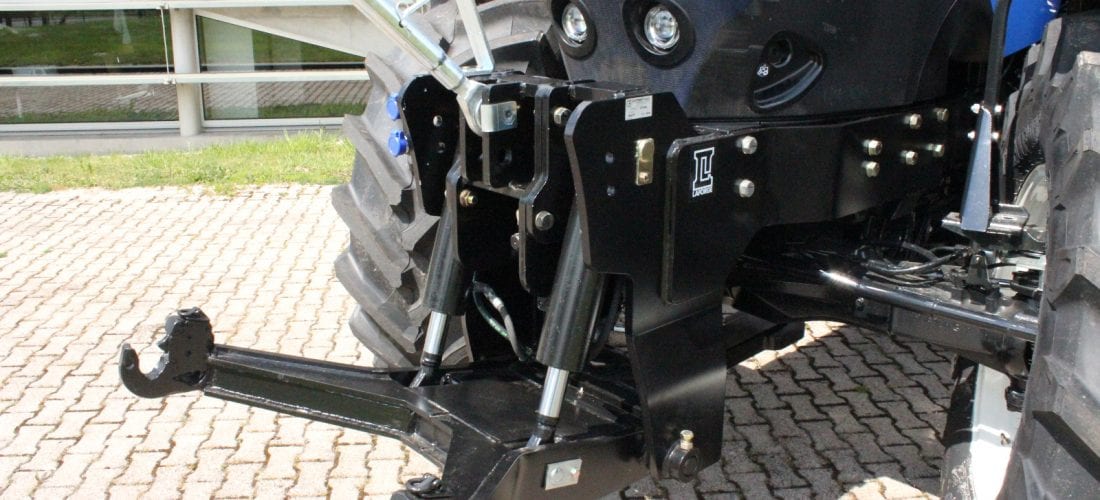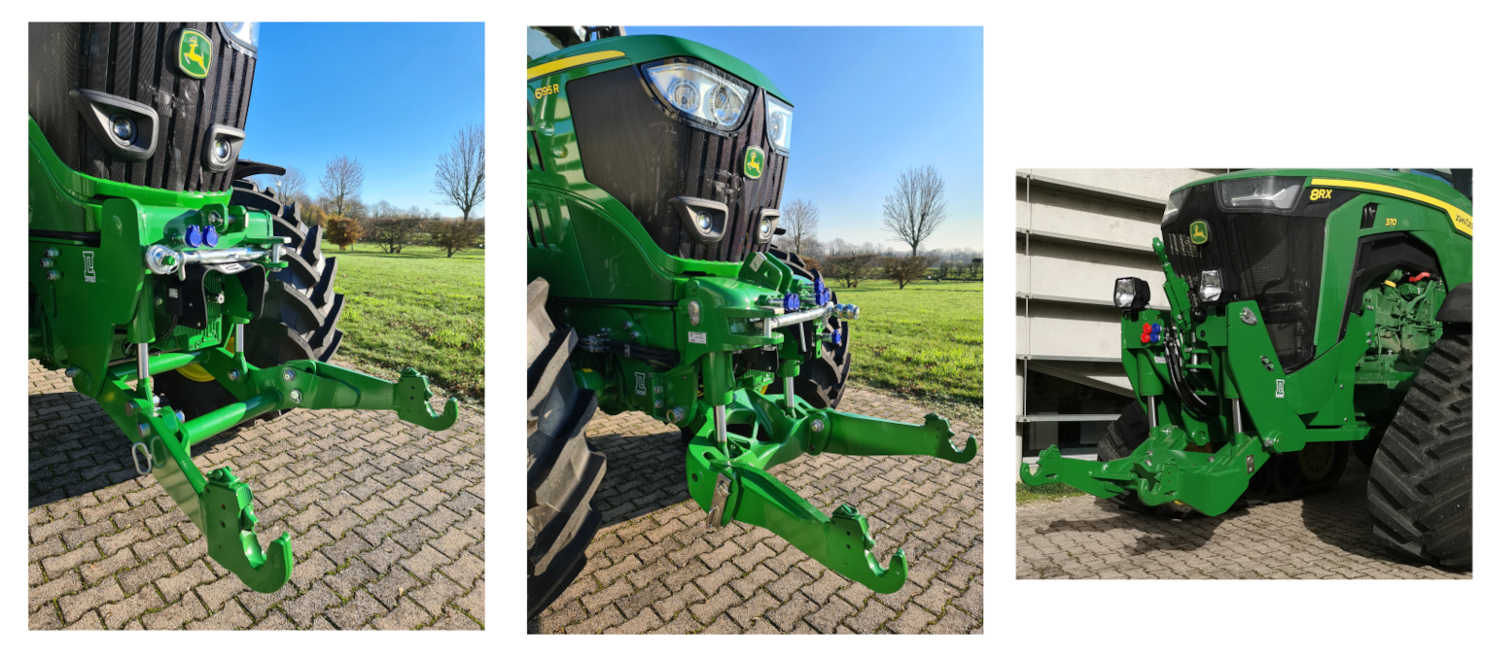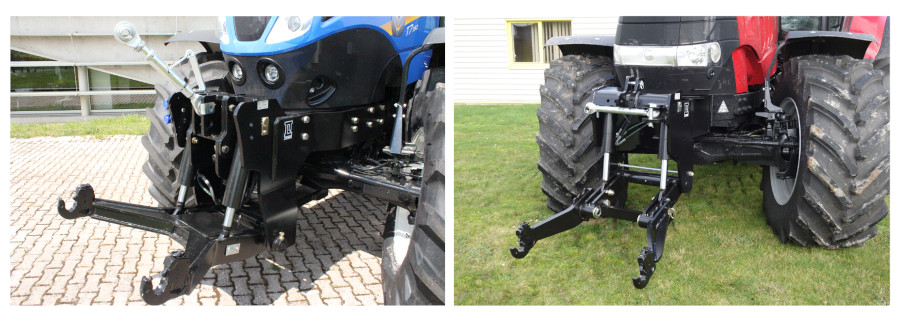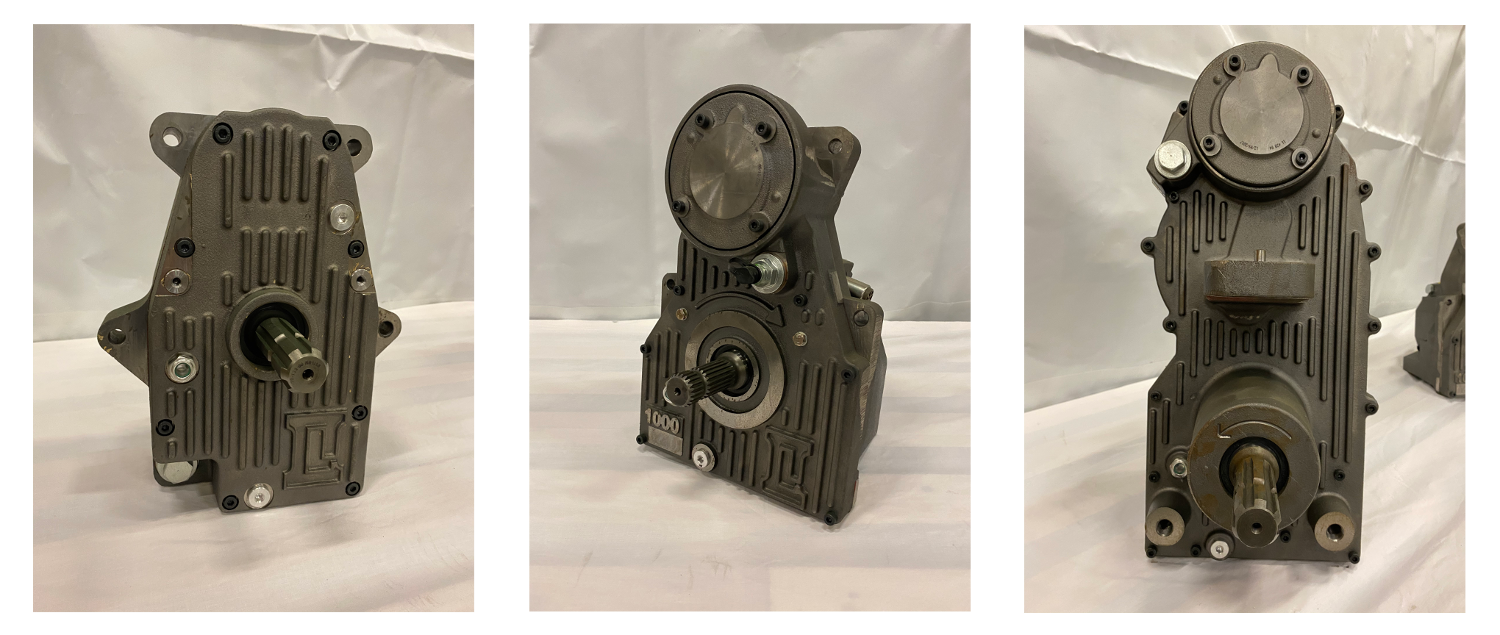What you need to know about front hitches
The front linkage concept appeared in the 70’s. From the very beginning, the increase of the versatility and productivity of the tractor is the target. By combining a front implement with a rear implement, the farmer gets two operations done in one pass. Front hitch use grew in Europe in the 90’s and 2000’s before becoming almost standard in the 2010’s. Consequently, tractor manufacturers also offer the front linkage as a factory-option for many tractor models. Its use also spreaded across the world. The main implements used with a front hitch are:
- Ballast
- Front tank or hopper
- Tillage implements
- Crimper roller
- Blade (silage, snow removal, earth work)
- Front plough
How does a front linkage operate?
First, a front hitch function is to go up or down to connect an implement at the front of a tractor and position it for field work or transport. The front linkage is managed from the cab with tractor’s distributors. Remote switches can also operate a front hitch position from the side of the hitch.
Secondly, there are other options available to equip a front hitch according to the requirements of the user:
- Front hydraulic receptacles: connected to tractor distributors, they supply hydraulic power at the front of the tractor for implements requiring it. For instance, for cylinders to fold the implement
- Return line for hydraulic motor: it allows oil to return directly into the hydraulic system of the tractor. Very convenient to avoid oil heating up with implements with high hydraulic requirements
- Parallel connection kit to rear distributors: it connects the front linkage or a front hydraulic receptacle to the distributor without blocking it when the front hitch does not work. Distributor is then available to operate another implement
- Harness for front electric connection: it offers electric supply at the front of the tractor
- Hooks for mower chains: set up the height of the front mower according to the position of the chains
- Hitch dampening kit: it absorbs shocks during transport with a front implement. It increases driver comfort and reduces mechanical constraints
- Weight carrier: it fits the front linkage and receive the front support of the tractor to position suitcase weights on it
- Electronic control: it sets the position of the front hitch and can regulate it according to slippage rate or desired weight transfer

